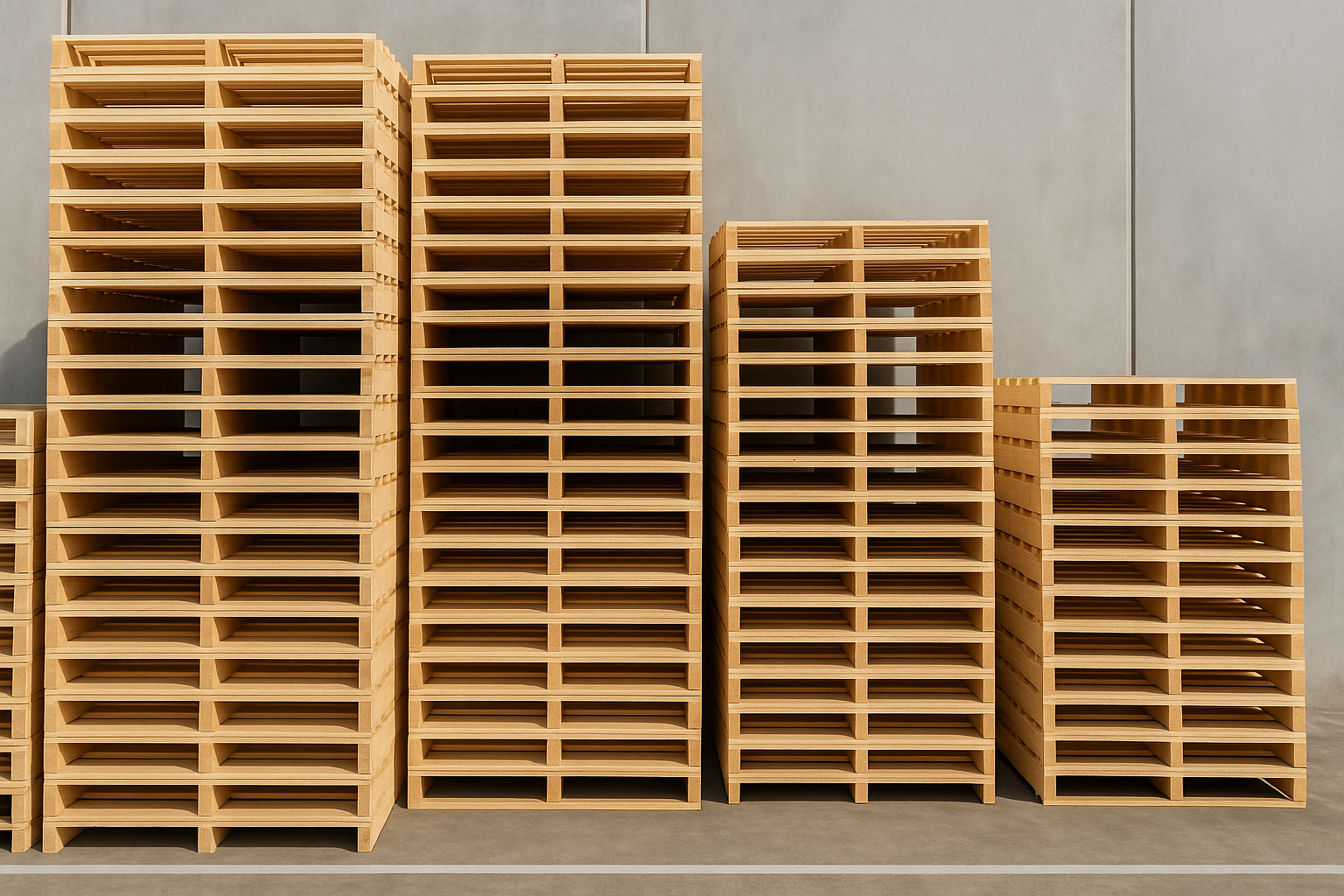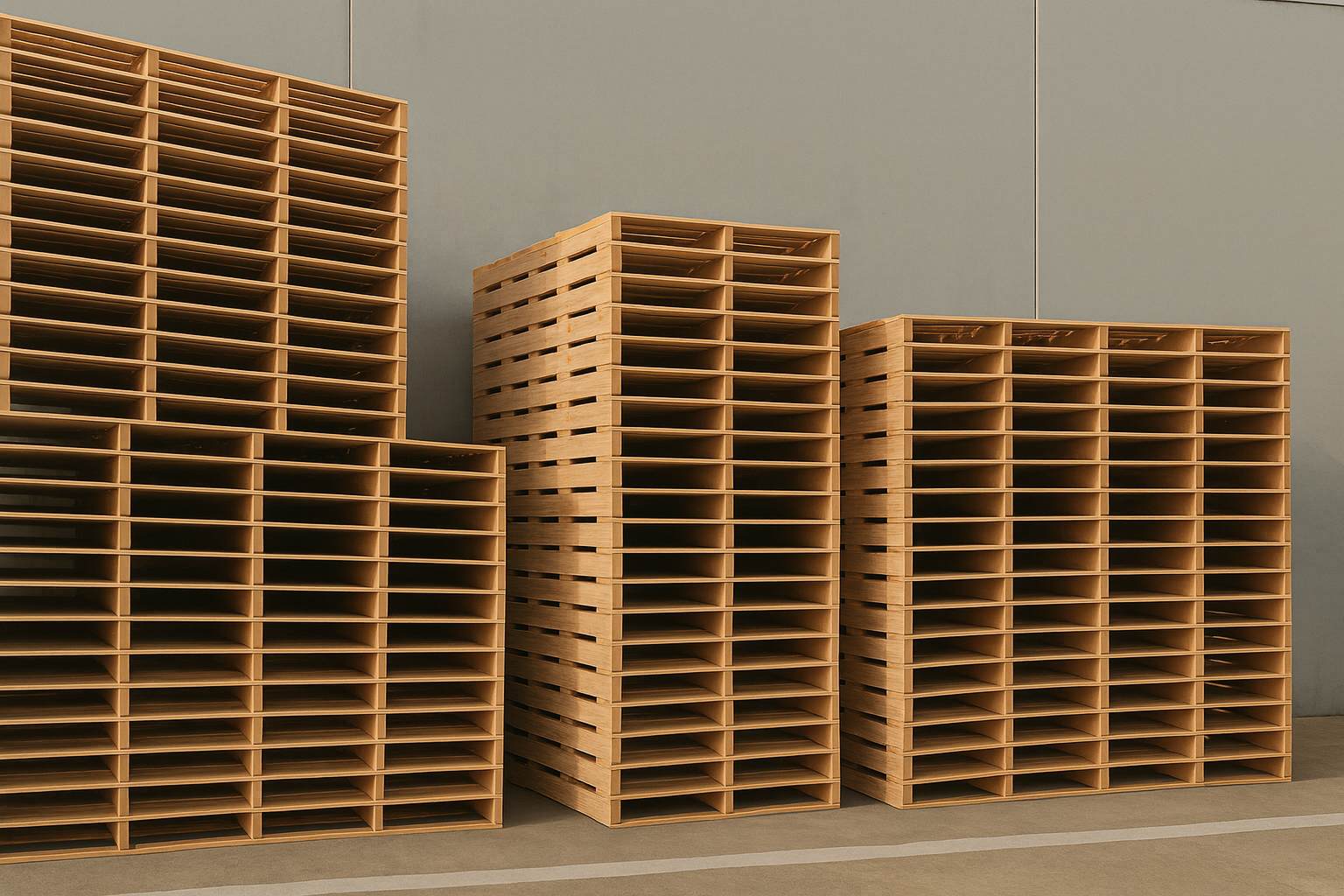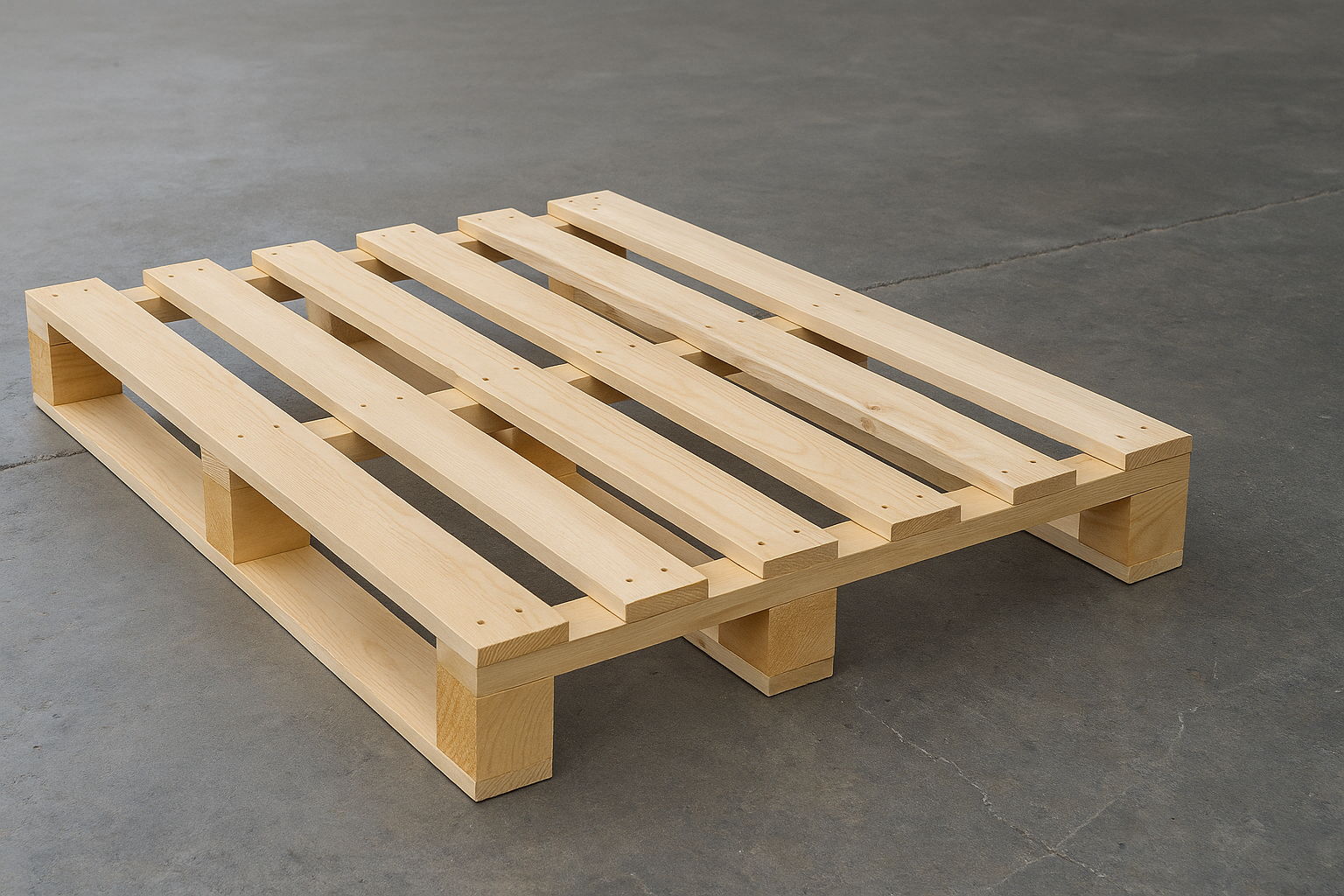At a glance:
- Damaged wooden pallets can disrupt your logistics chain, risking product loss, injury, and costly delays.
- Deck boards often crack due to overloading or forklift mishandling and should be replaced or reinforced promptly.
- Protruding nails pose safety risks and should be hammered in or replaced with screws for a more secure hold.
- Splintered wood should be sanded smooth and sealed to prevent injury and preserve pallet integrity.
- Warped boards caused by moisture or uneven loads must be replaced, and storage conditions adjusted to prevent them from recurring.
- Pallets exposed to chemicals or tainted with mould need thorough cleaning or safe decommissioning, depending on the severity.
- Ongoing maintenance, regular inspections, and skilled handling help extend pallet life and optimise supply chain efficiency.
One damaged pallet can cascade through your entire logistics process—holding up shipments, damaging goods, or even putting workers at risk. Wooden pallets, as strong as they are, face everyday challenges from rough handling, heavy loads, and unpredictable environmental conditions.
In this post, we’ll explore how to identify and address common types of pallet damage with practical, on-site solutions that reduce risk, improve safety, and extend pallet longevity. Whether you’re overseeing a warehouse, managing freight, or working in supply chain logistics, these insights can help keep your operations smooth and efficient.
Broken or Cracked Deck Boards
Deck boards, particularly at the top and bottom of the pallet, will split or crack due to overloading or improper forklift handling.
To avoid this, implement a regular assessment program to inspect deck boards for damage before releasing them into service.
If cracks or breaks are identified, promptly replace the affected boards with timber planks of the same size using galvanised pallet nails or wood screws to ensure a secure fit. For larger repair needs or to explore cost-effective reuse options, consider our pallet repair services in Melbourne.
In cases where immediate replacement is not practical, use metal reinforcement plates to temporarily stabilise the damaged area and prevent further weakening of the structure.
Read more: How Pallets Revolutionise Shipping and Warehouse Operations
Loose or Protruding Nails
Protruding nails are a common issue that not only jeopardises the structural stability of a pallet but also poses a serious safety hazard to workers.
During regular maintenance, any protruding nails should be driven flush into the wood using a claw hammer.
For nails that tend to loosen repeatedly, consider replacing them with wood screws, which provide a firmer grip and reduce the likelihood of recurrence.
When nail holes become too wide to hold a nail or screw securely, drilling a new pilot hole slightly offset from the original location can restore the fastening integrity of the board.
Splintering Wood
Splintered wood on pallets can injure workers and damage the products being transported or stored.
To mitigate this, sand down rough or splintered surfaces using coarse sandpaper or a palm sander to create a smooth, safe surface. Once smoothed, applying a wood sealant can help protect the area from future wear. Plastic edge protectors may also be used on frequently handled corners to minimise recurring splintering.
For sections that are severely damaged, it is advisable to remove and replace the affected boards entirely to maintain the pallet’s safety and effectiveness.
Warped Boards
Warping usually happens when pallets are subjected to dampness or uneven weight distribution during storage. Warped boards can destabilise loads, rendering stacking unreliable and causing shifting during transportation.
To deal with this problem, take out any warped boards from the pallet as soon as possible and replace them with flat, straight timber.
Proper storage conditions are essential—pallets should always be stored flat on level ground in a dry, ventilated area to minimise the chances of warping.
Additionally, rotate pallet stock frequently to distribute pressure evenly and avoid deformation from long-term stacking.
Contamination: Mould, Chemicals, or Odours
Contaminated pallets can compromise hygiene, especially in industries that handle consumables or sensitive goods.
Cleaning pallets with a mild detergent solution, followed by thorough drying in sunlight, is a reliable method for routine decontamination.
If mould is present, treat affected areas with a solution of double-strength vinegar or diluted bleach, then rinse and allow the pallet to dry fully before reuse.
However, if a pallet has been exposed to industrial chemicals, it must be decommissioned immediately. Such contamination presents unacceptable risks, and the affected pallet should not be reused under any circumstances.
For export and hygiene-sensitive uses, heat-treated pallets offer safer and chemical-free alternatives that meet ISPM-15 standards.
Related: Understanding ISPM 15 Standards for Wooden Pallets
Broken Stringers
Stringers serve as the main load-bearing beams of a wooden pallet, and any damage to them can critically weaken the entire structure.
When minor cracks or splits occur, metal repair plates or companion stringers—additional supports installed alongside the damaged area—can effectively reinforce the structure.
In more serious cases where the stringer is significantly compromised, it is necessary to remove and replace the damaged component entirely with new, properly treated timber.
Preventative training for forklift operators is also important; lifting pallets evenly from both sides reduces stress on the stringers and helps prevent future breakage.
Why Maintenance is Worth the Investment
Proactive pallet maintenance is more than just a preventative measure—it’s a cost-effective strategy that enhances operational reliability and safety. Implementing targeted solutions for common damage issues not only preserves the physical integrity of each pallet but also reduces workplace incidents and product losses caused by pallet failure.
Regular inspections, timely repairs, and proper storage protocols significantly extend the usable life of wooden pallets, allowing you to gain more value from each unit. For operations managing high pallet volumes or utilising pooling systems, this translates to meaningful cost savings and improved supply chain performance.
Further reading: How to Assess the Quality of Wooden Pallets Before Purchase
At Waterstone Pallets, we understand the critical role pallets play in efficient warehouse and logistics management. From standard size pallet options to custom timber pallets designed for unique needs, we provide solutions tailored to your business.
Ready to improve pallet reliability and reduce costly damage issues? Contact Waterstone Pallets today to discuss your requirements or request a quote. Whether you need standard, custom, or heat-treated pallets, our team is here to help you choose the right solution for your business operations in Melbourne or across Australia.



